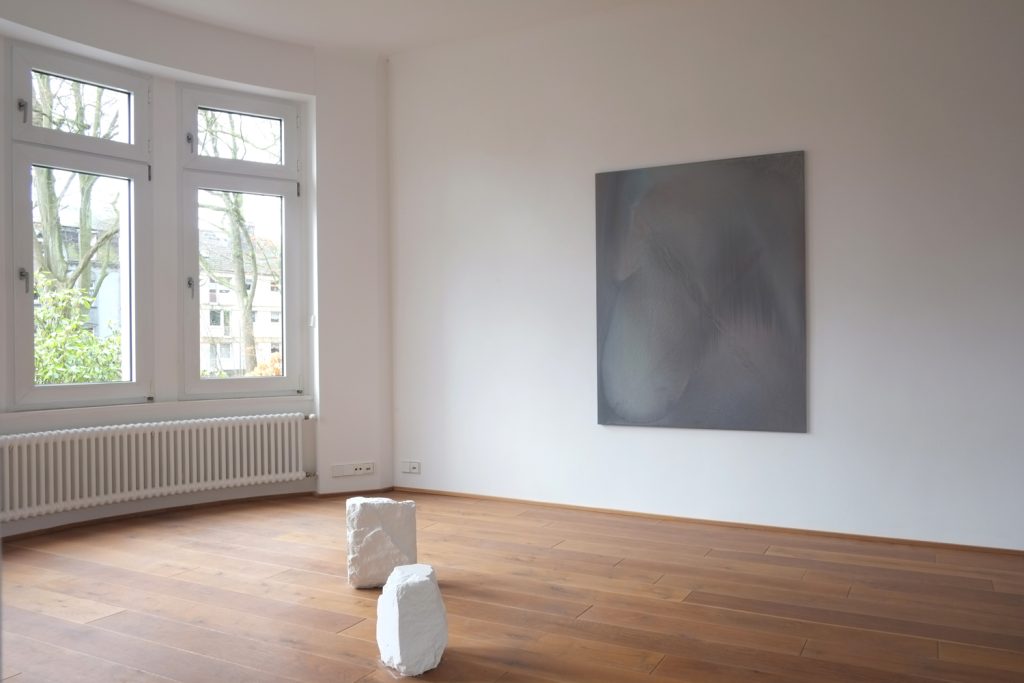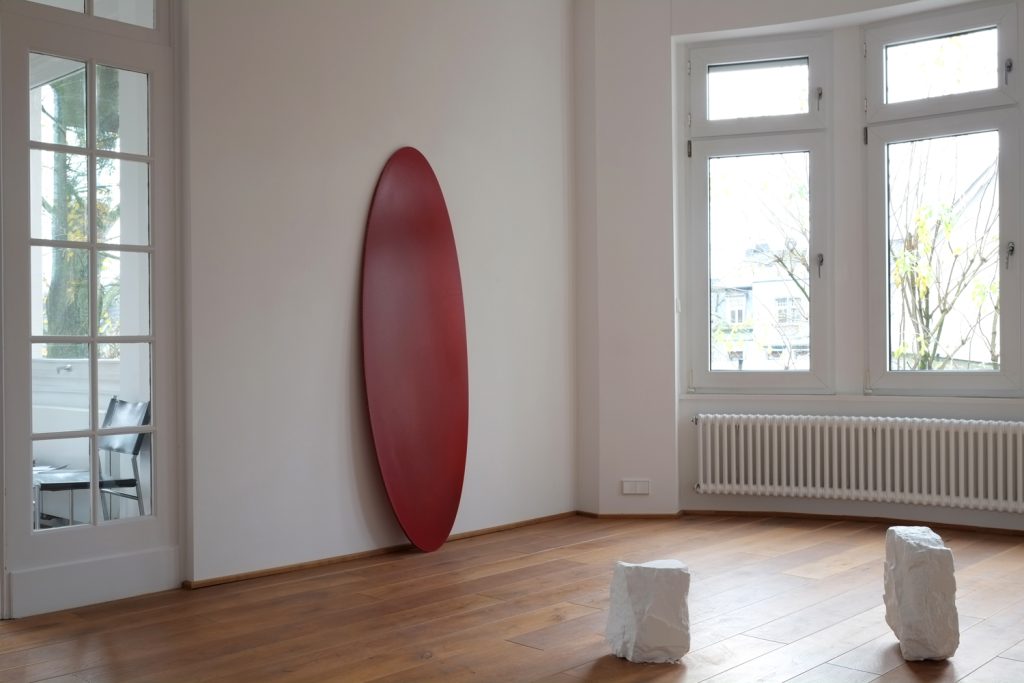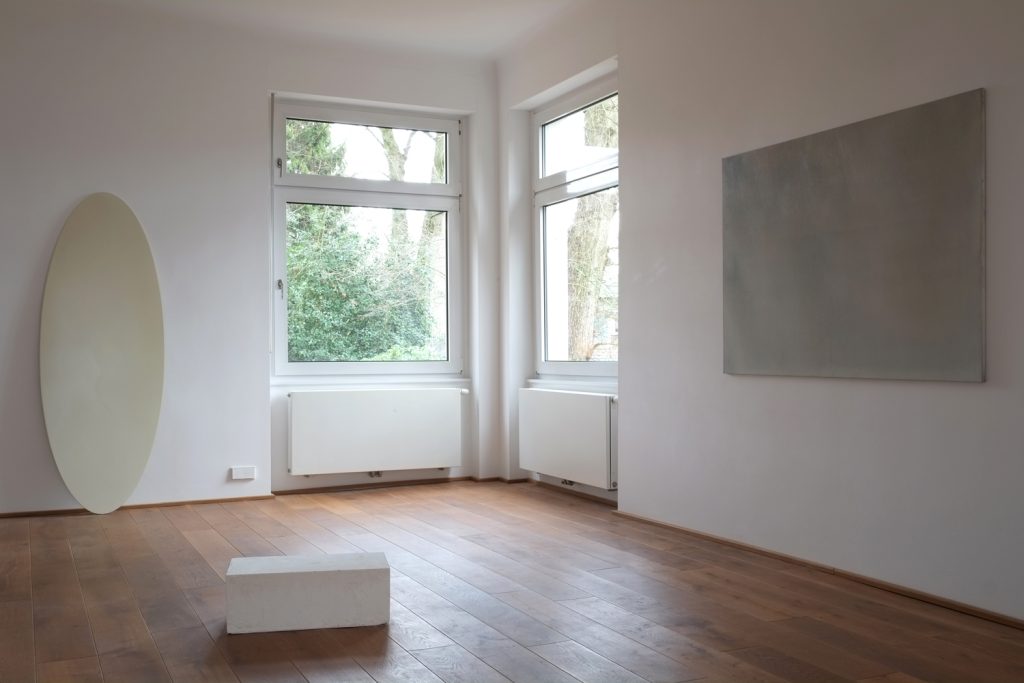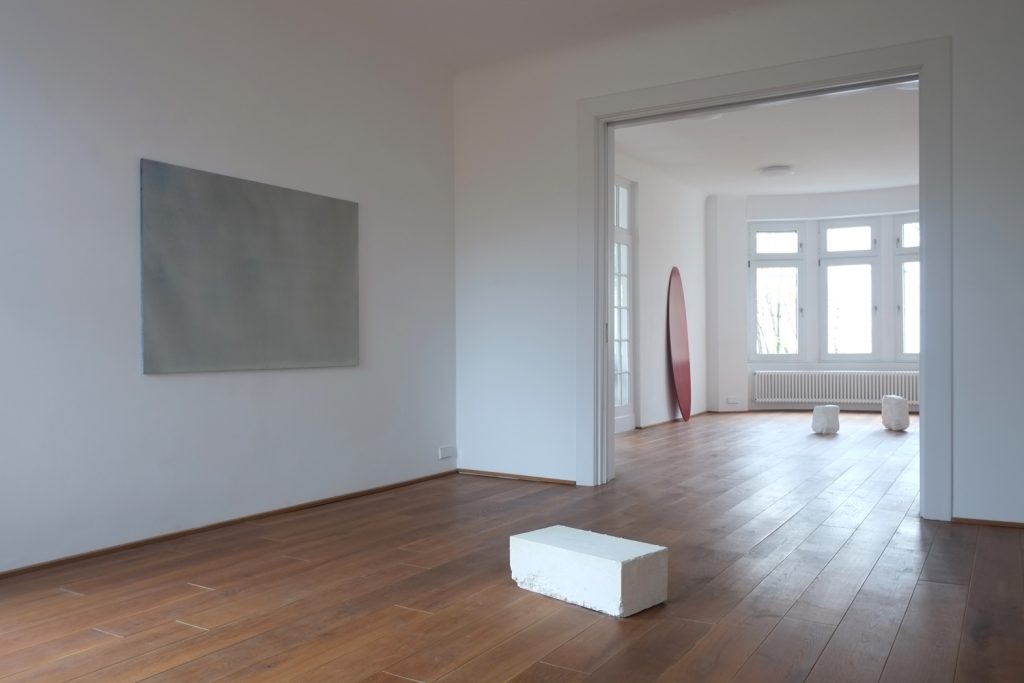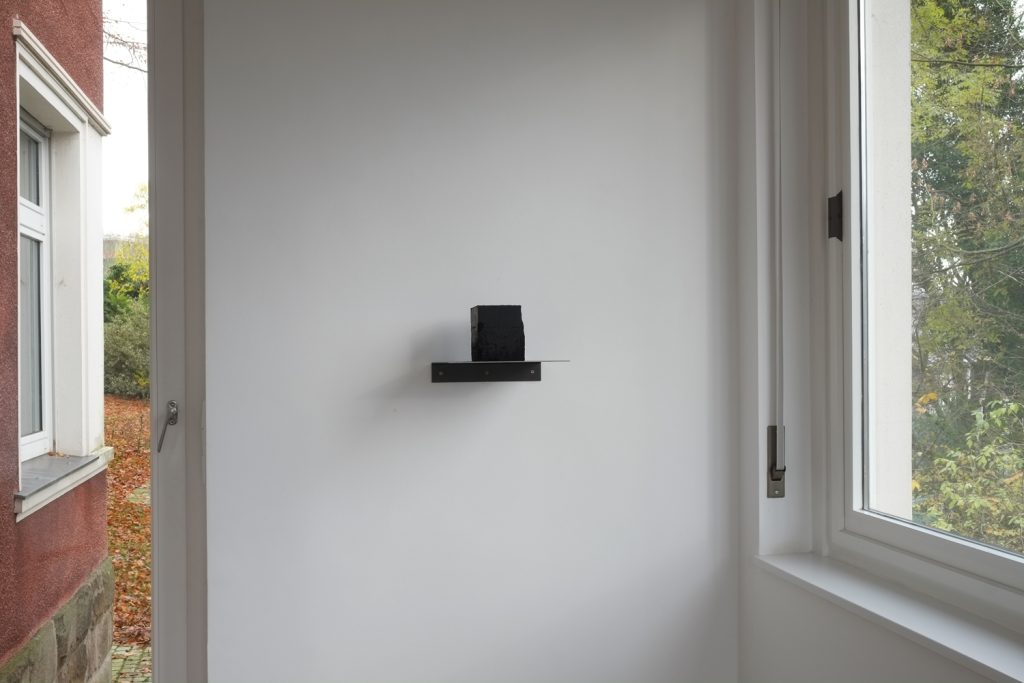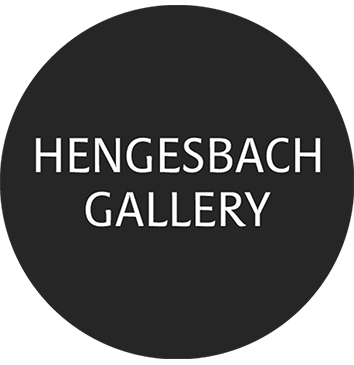Andrea Zabric
November 12, 2019 – January 19, 2020
Andrea Zabric’s paintings emerge from an engagement with the most elementary substance of painting: pure color pigments. For applying these pigments, she prefers a hard, smooth painting surface—wood. Since her interest lies not in the naturally grown character of wood but rather in the idea of a uniformly compressed material, she typically uses MDF. The heaviness of wood limits the size of her panels to a format that corresponds to the scale of the human body. Anything larger would be unmanageable, as her painting process requires a constant alternation between horizontal and vertical positioning. In this continual shift between the two basic orientations, she also enacts a fundamental condition of human existence—between vertical activity and horizontal rest.
Zabric’s painting process begins with elemental painting. She does not use pre-manufactured paints but instead starts with the most primal painting substance: pigments in their various colors. Each pigment differs not only in the spectrum of light it reflects but also in its grainy materiality and its ability to bind with other pigments. Zabric mixes her pigments into a painting medium and applies them to the support. In doing so, she makes a preliminary artistic decision—the choice of a specific type of pigment material as the starting point.
In the exhibition, two types of pigment form the basis of her works: graphite and cadmium. Graphite pigments are gray; cadmium pigments can be yellow or red. Zabric rubs her pigments into the surface of the support. This rubbing motion may be carried out using her hands and arms, or with brushes, rollers, spatulas, or through a pouring process, in which the pigments are guided over the surface in a general direction. From the results of both movement types, a slow, layered build-up of differences emerges from one pigment layer to the next. These differences articulate themselves in tonal values and subtle color variations, depending on the density of the pigment and the proportion of pigments from other material types added to the base.
The smallest distinguishable units of surface—tiny fields of difference—define a scale for each individual image. In this process of layering pigments, a unique topographical landscape profile arises from the accumulated differences, much like a real landscape. Such a static topography may appear visually intriguing, but it does not yet fulfill the criteria of a truly satisfying work of art. It becomes such only when the static topography is brought to life.
This liveliness does not imply, as in a real landscape, the presence of a unifying river carved into the middle. Rather, the landscape should allow the human eye to glide through it as a unified whole—and in this gliding, something from the human soul should flash forth. There must be a continuous interplay between the set scale of the details and the totality of the pictorial field. The individual detail to which the eye may attach itself must always be guided back into the larger whole of the pictorial field—carried outward to the edges of the image and brought to a close there in such a way that we as viewers do not feel compelled to look beyond.
In each work, different types of smallest visual elements may arise during the layering of pigments, and these can each immerse into the greater whole in entirely distinct ways as individual points of marking. What is essential is that, out of the topography of differences, both a pictorial light and a color light develop—giving the image a character that transcends a mere landscape of variations.
However, this “pictorial light” does not refer to a source of light depicted within the image. Rather, something emerges from the brightness variations of the material surface—something that grows into a holistic vibration, which we can describe as an orientation toward feeling. Such feelings speak of human intimacy, of emotional states that are fundamentally tied to our inner emotional life, to our moods.
To emphasize the distinction between mere material density and a materiality transformed into human intimacy, the artist is concerned with placing her paintings in contrast to compressed pigment masses. These pigment mounds have taken on a form imposed upon them through extreme pressure. Depending on the type of pigment, they may more or less easily retain their box-shaped mold or fall from it and become lumpy, block-like forms. Such a material clump, with its unique accidental process of shape deterioration, may appear visually interesting—like a randomly discovered boulder—but it never conveys the sense that an emotion has emerged from its density.
It does not give rise to a feeling in which light and color have congealed into a human presence, into a counterpart imbued with life.
Installation Views
